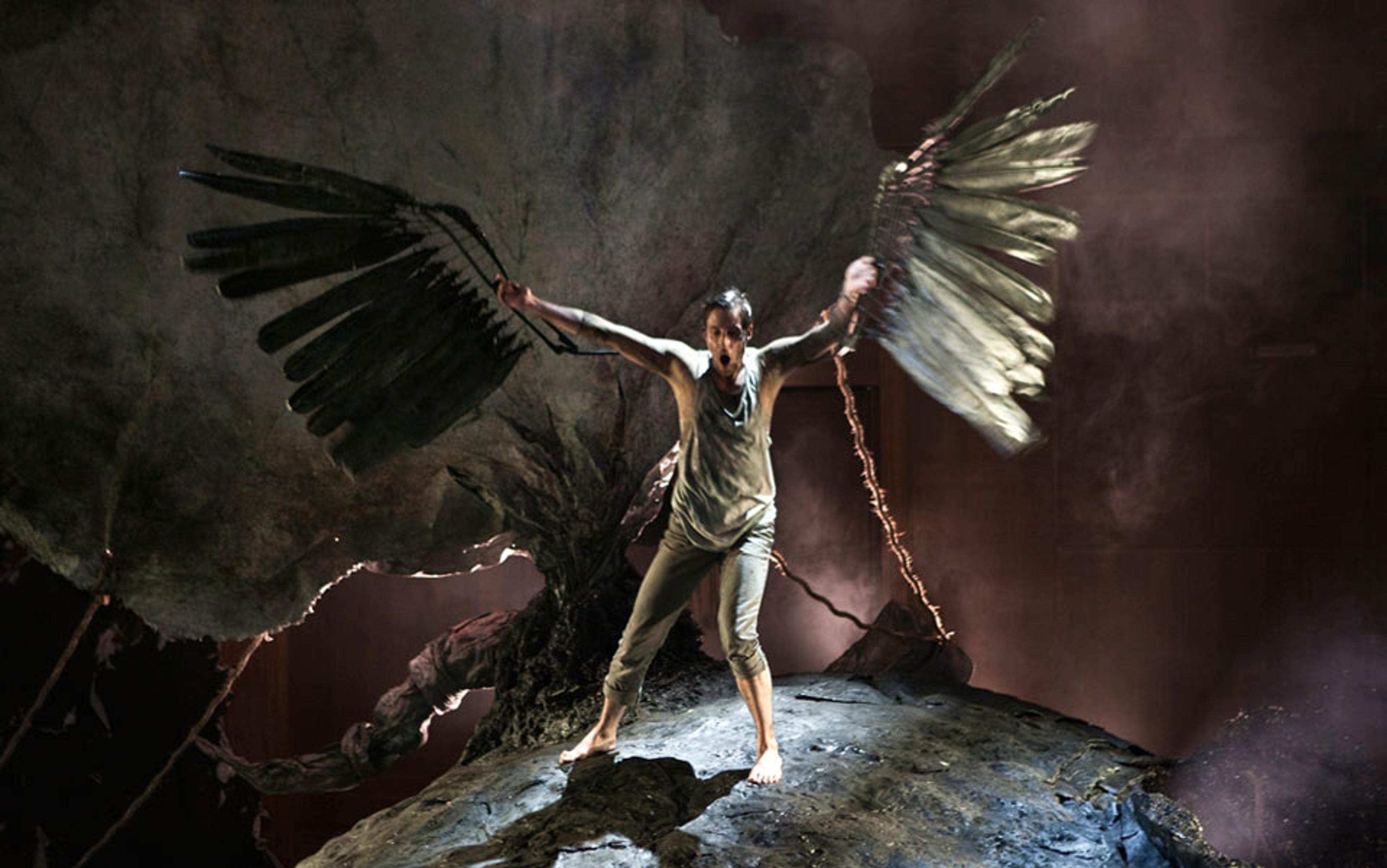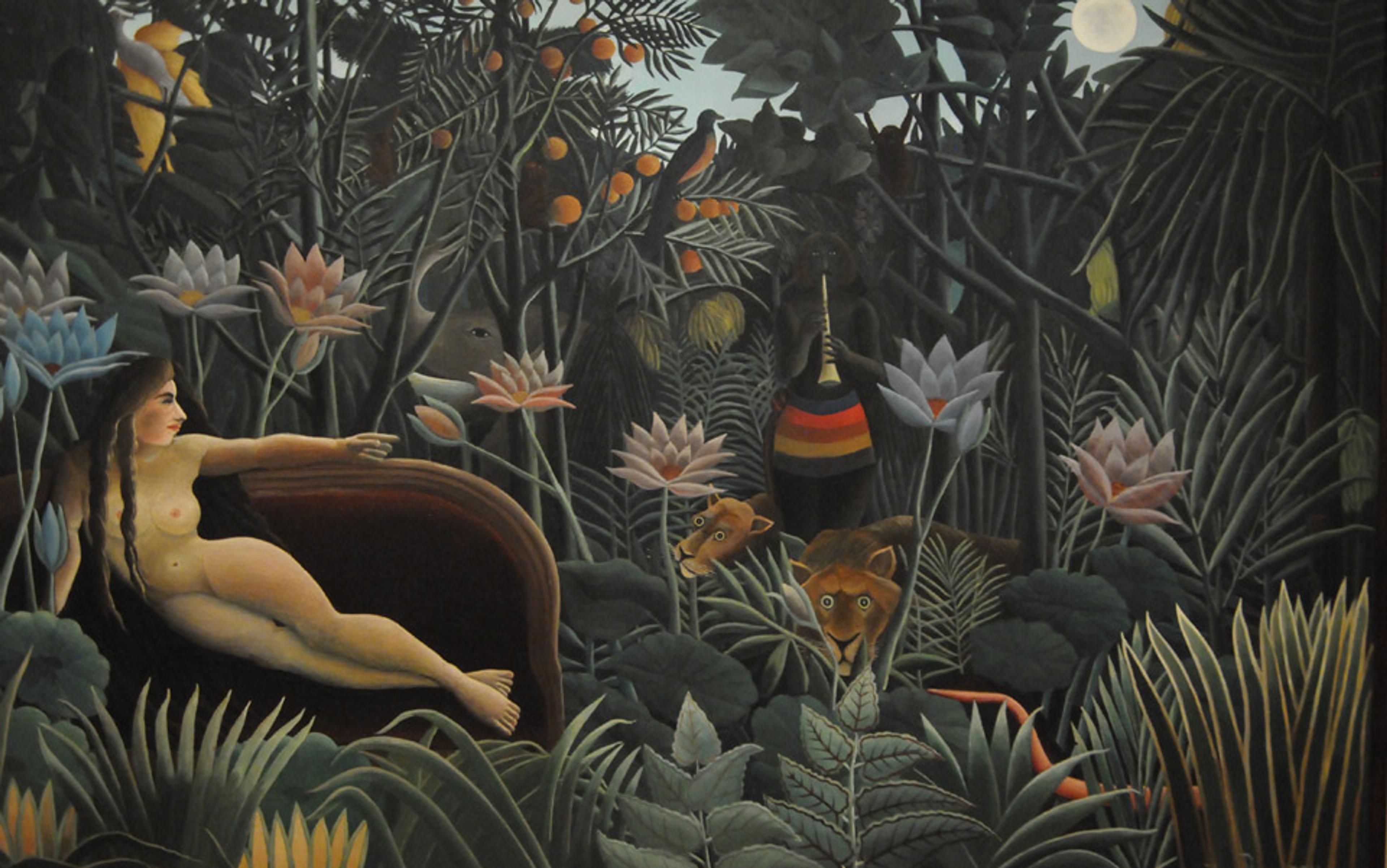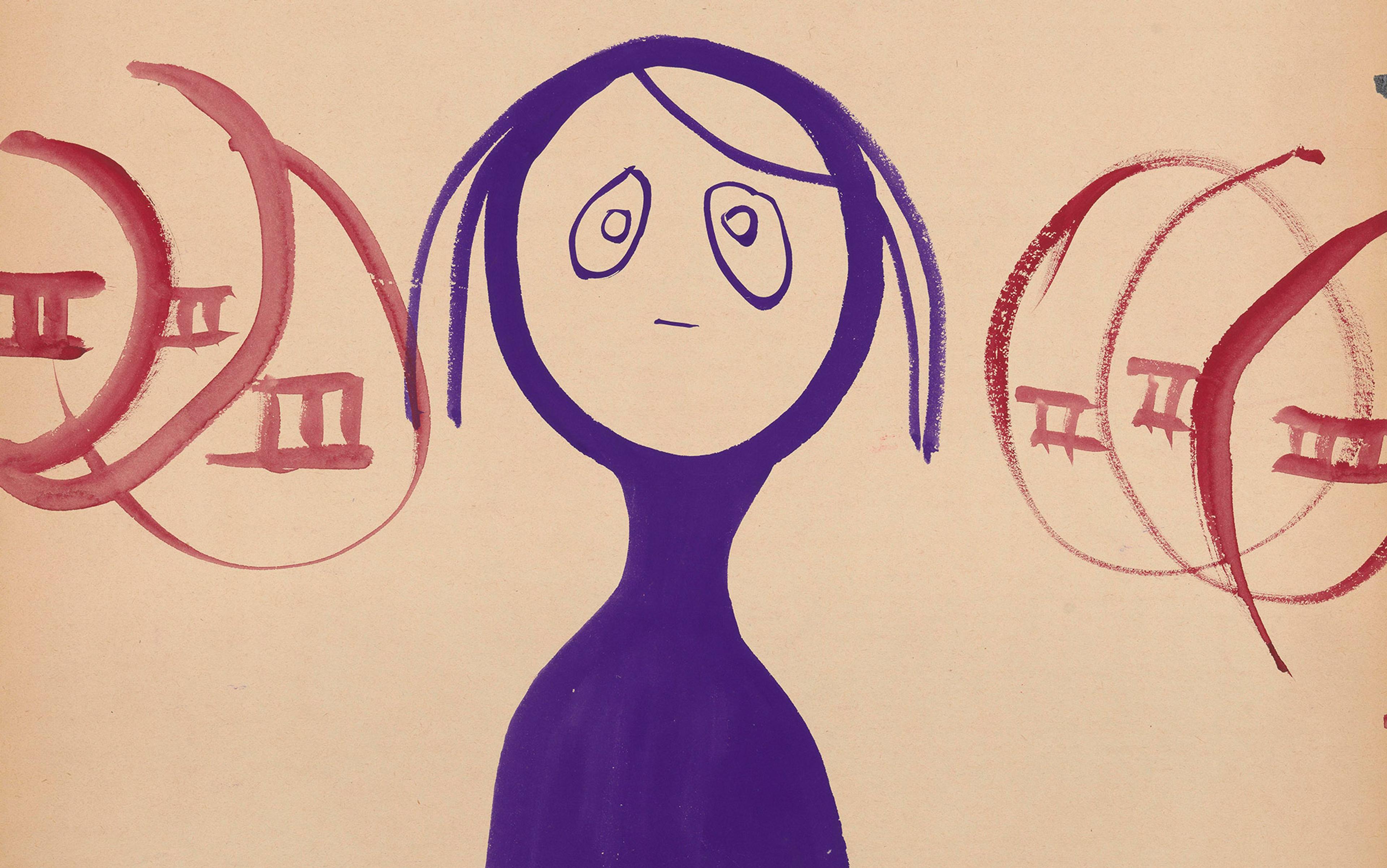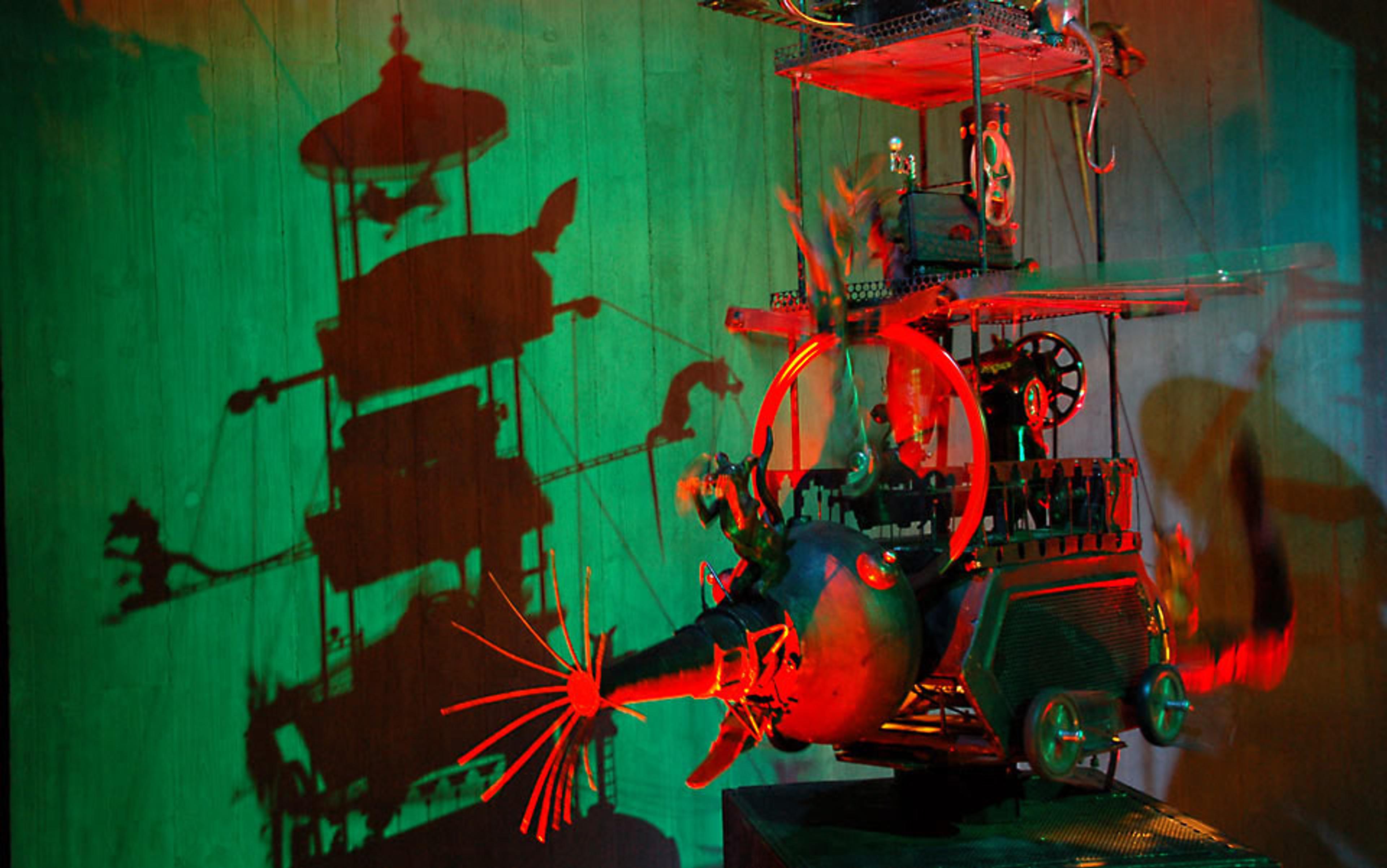Eros is coursing through the forest. The forest is mewing with its jaguar life. Life is spiralling into poetry. I am in the other world, I thought, at once in the actual forest and in the forests of the mind where the visible world is not denied but augmented.
I had gone to the Peruvian Amazon seeking treatment from forest doctors for an episode of depression so long and so severe that I had worked out how I was going to kill myself (length-wise, in the bath).
What I experienced was more than the healing of this desolate madness, it was a sense of the raw, green-eyed, lustrous sacredness of life which has never left me, and which came through a sense of identification with other creatures, the knowers of the forest. Shamanism is universally concerned with the well-being of both nature and human nature, and the relationship between them. Here in the Amazon, the shamans’ rituals unleashed in me a force of empathy that was exact, sensitive and enraged. The pull of my imagination was tautened by all the aspects of the occasion: the medicine, the night, and the shamans’ songs until, the torque twisted most surely, I lost my singular self and stepped across the border in a wild, charged, ferocious apprenticeship to a jaguar.
At times, I felt a hot sexuality coursing through me as if, in pelt and paw and breath, I could feel from within my body a radical love for the earth as strong as the gravitational force. At others, I felt a prowling rage, as a jaguar might feel, watching the trenchant stupidity of deforestation. My society is destroying this forest. The anger burned me and I could feel the fire of pure fury. How can modernity know so little for knowing so much? The sacral need to protect life in all its forms swept through me like wildfire, with meaning not only intellectual but physical, sensory, what Hermann Hesse called ‘this felt faith’.
This was shape-shifting. It is part of the repertoire of the human mind, cousin to mimesis, empathy and Keats’s ‘negative capability’, known to poets and healers since the beginning of time. It did not hold literal truth, quite obviously, but had a ‘slanted, metaphoric truth’ — the words I used, when the page was printed, to describe it.
Shape-shifting is a transgressive experience, a crossing over: something flickers inside the psyche, a restless flame in a gust of wind, endlessly transformative. The mind moves from its literal pathways to its metaphoric flights. Art is made like this, from a volatile bewitchment, of a self-forgetting and an identification with something beyond.
Ted Hughes once said that the secret of writing poetry is to ‘imagine what you are writing about. See it and live it … Just look at it, touch it, smell it, listen to it, turn your self into it’. One writing exercise Hughes suggested for students was titled: ‘I am the Amazon’. We are what we think, and we humans have a way to become other, in a necessary, wild and radical empathy.

Dark transformation: a scene from the Handspring Puppet Company’s production of Ted Hughes’ Crow. Photo by Simon Annand
Shape-shifting involves a willingness to make mimes in the mind, copying something else. Art, meanwhile, depends on mimesis furthering our desire to know and to understand. In a recent, Ovidian, dance piece, ‘Swan’, French dancers performed and swam with live swans, imitating the birds in a mime which alluded to the metamorphosis of all art, and to the artists’ ability to lose themselves in order to mirror something beyond.
‘But we, when moved by deep feeling, evaporate; we/breathe ourselves out and away’, wrote Rilke in ‘The Second Elegy’.
In making art, the artist expires, breathing herself out to allow the inspiring to happen, the breathing in of glinting universal air, intelligent with many minds, electric and on the loose. Artist, shape-shifter, shaman or poet, all are lovers of metamorphosis, all are minded to vision, insight and dream.
Imitative shamanism can reek of cultural appropriation, but even in cultures that have temporarily misplaced their shamanic rites, the role survives, donning a deep disguise. The American writer and mythographer Joseph Campbell, among others, believed that artists have taken up the role of the shaman. It seems to me that this is true for a distinct reason: both art and shamanism use the realm of metaphor where feeling is expressed and where healing happens. With metaphoric vision, empathy flows, knowing no borders. Both artist and shaman create harmony within an individual, and between the individual and the wider environment, a way of thinking essential for life. Poetry works ‘to renew life, renew the poet’s own life, and, by implication, renew the life of the people’, wrote Ted Hughes. But ours is an age of lethal literalism that viciously attacks metaphoric insight and all its values, an age that burns the Amazon and mocks those who would protect it, sing it and become it.
Shamans may be feared if they are seen to ‘bind’ people with ‘spells’, and a good storyteller is spellbinding. People are entranced by Debussy, mesmerised as by a magician. The shaman may sometimes act the part of a showman and, from Liszt to the Beatles, performers are glamorous, in a history older than they may know, for glamour was an old term for bewitchment.
Artists — for which read musicians, dancers, performers, sculptors, painters, directors, writers and poets, the lot — often suffer an overwhelming psychological experience in youth, according to Campbell, as if ‘the whole unconscious has opened up and they’ve fallen into it’. Shamanism, like art, is a calling, and a young person may be ‘doomed to inspiration’ as the anthropologist Waldemar Bogoras wrote of the Siberian shamanic vocation. In a painful transformation lasting months or years, the young shaman loses interest in life, eats little, is withdrawn or mute, sleeping most of the time. It reads like a portrait of the young artist in a devastating depression. The young shaman overcomes the illness through the practice of shamanism, just as many artists know that their own best medicine is found in their work.
Lit by their own sun, like Van Gogh, artists are guided by a vision from the dark side of the mind, fleet with the peculiar velocity of sudden stillness
Art creates an emotional catharsis, said Aristotle, which rebalances our emotions. With the shamans in the Amazon I felt a powerfully cathartic effect, when they used a medicine called (among other things) la purga, the purge, which is one translation of the Greek word catharsis.
The shamanic trance is like the entranced artist, the ordinary laws of time are repealed, the illumination of daylight doesn’t apply. As intense as the flame absorbed by its own burning, as the wine intoxicated by its own alcohol, as the wind swept by its own gust, their paradoxical role of ferocious power is coupled with unshieldable vulnerability. Shamans and artists alike occupy an ambivalent place in society, treated with both savage psychological violence and fear as well as deep reverence. Consider how viciously hated and profoundly honoured was Ted Hughes. If I had met him, I would have wanted to kneel, an ancient fealty due.
Shamans have traditionally lived on the edge of their communities, and the quality of ‘edge’ is what marks original artists. The shamanic path and the artist’s way are both associated with the hero’s journey, as Campbell terms it, ‘the dangerous, solitary transit’. Solitary. That’s the word. The path known to be stony and lonely, the unknown destination known only to be beyond.
In what is understood to be a self-portrait, Michelangelo painted the solitary, sad figure of a centurion in The Crucifixion of St Peter, and the young William Blake recast the figure, deepening the loneliness to accord with his own experience of being a visionary in a scornful world. ‘Wisdom is sold in the desolate market where none come to buy,’ Blake wrote in Vala, or The Four Zoas, in a bleak version of a universal understanding: as the Inuit shaman Igjugârjuk commented in the early twentieth century, ‘True wisdom is only to be found far away from people, out in the great solitude’.
During one ceremony in the Amazon, I had the sensation that one of the shamans had sent his soul out to find mine. Although I was lost in the dark forest of depression, suddenly he was there, in a bright clear pool, healing and sunlit. Shamans use the term ‘soul-loss’, not an expression I had heard before, but exactly what I felt the moment mine was found. A good healer of any kind can find people who are lost in the forests of the mind.
Halfway through his journey in life and lost in a dark forest, Dante began his poem-path. By naming his lostness to his readers, they, if they are lost themselves, may feel understood — found — by him. Artists send their soul out into the world in a parabola, thrown from the heart of solitude so that in the arc of its return it can comprehend and speak to the loneliness and separateness of other minds. A book, as Franz Kafka said, must be an ice axe to break the sea frozen inside us.
With his raw materials of rough magic, wax, felt, fat and coyote, the artist Joseph Beuys interwove art and the shamanic role. Max Ernst took on a shamanistic familiar, the bird-king Loplop. The German philosopher Novalis wrote of Romantic poetry’s aim to ‘give mysteriousness to the common, give the dignity of the unknown to the obvious, and a trace of infinity to the temporal’. He could have been describing the shaman’s art.
The violinist Yehudi Menuhin came to consider his playing a form of healing. The Sámi shaman-musician Nils-Aslak Valkeapää and the singer Woody Guthrie (both political artists) shared a parallel experience when they were young: people began coming to them for help and for healing of the psyche. They responded instinctively and empathetically, taking the role of healer as they would in later life, healing both the individual and the body politic through their music.
Shelley considered poets the unacknowledged legislators of the world. Shamans may work as acknowledged legislators of their worlds, and part of the shaman’s traditional role is to regulate hunting, laying down rules, taboos and off-limit places or times, in order to allow wildlife to thrive. Welsh bards were actual legislators as well as poets and, in fifth-century Athens, theatre and music were tied to governance, so attending performances was considered part of a citizen’s preparation for jury service and legislation.
In his fascinating anthology Shamans Through Time, the anthropologist Gerardo Reichel-Dolmatoff describes Amazonian shamans as typically curious, humane and fascinated by myth and tribal tradition. A shaman’s spirit will ‘illuminate,’ it should ‘shine with a strong inner light rendering visible all that is in darkness, all that is hidden from ordinary knowledge and reasoning’. Lit by their own sun, like Van Gogh, artists are guided by by a vision from the dark side of the mind. Obscurity shines in its own night because their tricky truths triangulate a turquoise paradox, fleet with the peculiar velocity of sudden stillness.
Mediating between a world of daylight sight and a world of night insight is the role of both shaman and artist. Rilke termed it ‘divine inseeing’. Offering a particular kind of attention yields a different kind of knowledge: in part it is the wisdom of the dream. Amazonian shamans may be called sueñadores or sueñadoras, the dreamers. ‘I am here to dream dreams,’ said Nils-Aslak Valkeapää. In The Seasons of the Soul, Hermann Hesse wrote: ‘I stand alone in my role as a “dreamer”’.
At night, when the day closes its eyes, othersight is possible. With our eyes closed, we see in dreamsight, sharing nightly the paradox of vision known to Tiresias, the blind seer. It is revealing that the first recorded metaphor is of sleep: in the Epic of Gilgamesh, sleep is described as mist, as though metaphor is, from its earliest use, the property of the dreamer.
Only a metaphor seemed a craft strong enough for me to cling to, a boat to carry my grief across the sea to someone else’s mind
Wallace Stevens calls poetry ‘the necessary angel’, and the root of the word ‘angel’ is the Greek for messenger. To be a messenger, to negotiate between the real and visible world and the true and invisible world is, shamans say, a crucial part of their role; and the artist, too, is a messenger between actuality and imagination.
Hesse said the poet is a messenger ‘between the familiar and the unknown as if he were at home in both places’. The kinetic power of artist and shaman resides in their ability to return their insights to their communities, to go down with Dante and find the providential paradox that only in the depths can the high ascent begin.
It is a peregrine part, shamanism and art both, each stooping for their prey. Sometimes the journey is juddered, as the Man from Porlock cannons through the door. Sometimes the journey is a seduction and sometimes a refuge, often more real to the artist than anywhere else. ‘Thou must pass for a fool,’ writes Emerson, ‘And this is the reward: that the ideal shall be real to thee’. The writer-character in Hemingway’s The Garden of Eden begins to live more and more in ‘the other country’, the land of his novel, and the real world comes to seem false. Dwellers on metaphor dwell more truly in that other world.
If I were asked what is the greatest human gift, I would say it is metaphor. A little boat of metaphor chugs across the seas, carrying a cargo of meaning across the oceans that divide us. Metaphor is how we relate to each other and how our one species attempts to comprehend others. With this gift, humans listen and speak more intensely and the meanings of all things — ocean or forest, snail or chaffinch — grow outwards in concentric rings of concentrated word-poems. ‘Every word was once a poem,’ said Emerson, and ‘language is fossil poetry.’ So a tulip ultimately derives from the Turkish word for turban and a daisy is the sun: the day’s eye.
Metaphor works with the legerdemain of the psyche, the lightest of touches to shift the mindscape, transforming one thing into another, leading to new ways of seeing. Metaphor follows Emily Dickinson’s injunction to ‘tell the truth but tell it slant’. So, slantwise, by Saturn-mind running rings around literalism, metaphor is a canted incantation, it breathes life into fact, it enchants.
In Here Is Where We Meet, John Berger describes a moment in his childhood when on a visit to Epping Forest with a small friend, he drew an owl, and hid it in the hollow of an oak. Returning later, the drawing had gone and the hollow was full of feathers. His friend said they could write with them. ‘I thought she meant they were an alphabet. It could be that it is with them that I’m writing at this moment.’ Swinging, like a feather falling, between real feathers and the mind’s metaphorical flight and back to feather.
Shamanism and poetry both use indirect, implicit and enigmatic language to know and to heal. Amazonian shamans, talking to the anthropologist Graham Townsley, described their mode of expression as ‘language twisting-twisting’, and explained its elliptical and abstruse power thus: ‘I want to see — singing, I carefully examine things — twisted language brings me close but not too close — with normal words I would crash into things — with twisted ones I circle around them — I can see them clearly’. Metaphor, says Townsley, changes the world by changing people’s perceptions of it. Artists know that blunt and obvious references militate against deeper thinking and prefer to work in subtle, oblique ways.
At my most depressed, in order to describe what I felt, I said I was drowning. No literal description was good enough. Only a metaphor seemed a craft strong enough for me to cling to, a boat to carry my grief across the sea to someone else’s mind. For some, elliptical language may be the only way to unwrap tight, compressed pain. For others, self-disclosure can only take place in language which conceals, even as it draws attention to itself. A good therapist listens carefully to a client’s metaphors, ellipses and masks, for they are true beyond literalism.
The shamans I visited used a metaphor common in the Amazon: you have been struck by arrows, they said, poisonous darts designed to kill the spirit
In Australia, I met an Indigenous woman who was a ‘story doctor’, choosing which story to tell to help heal someone. Some stories can be spells to heal oneself. I recently wrote a novel partly ‘about’ Frida Kahlo. At first, it was entirely autobiographical, but it was too uncovered and I needed the allusive nature of fiction to tell a story more truly. So my book is a votive story, a prayer that my life might copy my art.
Halfway through his life, Jung found himself lost in an underworld of the psyche which he was determined to understand. He noted two influences: one, the ‘spirit of this time’, was concerned with ‘use and value’, while the other ‘rules the depths … the inexplicable and the paradoxical … the melting together of sense and nonsense, which produces the supreme meaning’.
The shamans I visited used a metaphor common in the Amazon: you have been struck by arrows, they said, poisonous darts designed to kill the spirit. It was a perfect metaphor for what I — like so many artists — had experienced. And, they said, they could suck them out of my mind. So, like powerful dramaturges, they dramatised the metaphor, embodied its meaning, staging the powerful sense of cure, sucking the poison out of my head. It made me well.
Placebo effect, a cynic may might say. Absolutely. The word has its roots in ‘pleasing’, and good medicine like good art should please in order to heal: the placebo’s success is evidence for the power of metaphoric medicine to heal mind. ‘My project,’ says the magus Prospero in The Tempest, is ‘to please’. In the Amazon the shamans sang songs over me called icaros, half-whistled, half-voiced, half-heard, half-imagined: exquisite Ariel music, in themselves mind-medicine, curative music sung by these curanderos. Ted Hughes wrote of ‘the healing effects of reading and writing poetry’, which recalls the fact that the Ancient Greek Apollo was god of poetry, music and healing.
A bundle of eagle feathers, perhaps, or a pelt of wolfskin, a drum painted with ciphers of a particular land, a hare paw, maybe, or a tiger tooth or bone of reindeer — shamans identify themselves with the motley earth, in patchwork cloaks jingling with diverse life. The striking correspondence of shamanic practice the world over, the similarity of costume and the likeness of role, have led some to suggest that shamanism somehow began in one place and spread globally. To me, that is absurd. Rather, it will arise, this ur-religion, wherever earth meets mind.
Wordsworth called himself ‘nature’s priest’ and the term suits a shaman’s role from the Amazon to the Arctic. In Tanzania, shamans may be called ‘doctors of the forest’ and they must protect it. Shamans have always known what the discipline of ecology has painstakingly retaught: that everything is interdependent and coursing with a transcendent and sacred life force.
Shamanism survived in Britain and much of Europe until the witch-hunts, when the beyonders’ wisdom and nature-knowledge was hunted down. So knowers and seers had to shift their shape, in a new transformation which radically masked who they truly were.
I think I can see it happen. Watch Shakespeare. His fools and jesters shine out of his plays with the illumination so typical of the shaman’s role. They are charismatic, mercurial, they play as reckless tumblers and clowns and yet the Fool is wise. The quality of empathy that shaman and artist both have is portrayed in Lear’s poignant, devoted, suffering fool, and is played out in numerous acts of mime and mimicry, those related skills of fools. Characters of licence, they can speak truth to power, they are called mad when they speak their sanities to a crazed court; they may speak a language twisting, twisting the words of a king to wring out his honesties.
Shakespeare’s fools trip logic with inspired nonsense and, acting by their own twilights, speak truths in a shadow language denied to the glaring light of literal speakers. To restore balance, they create a turvy-topsy world, they are grave at comedy and witty at the graveside, they are liminal, living on the edge. Like shamans, they are unsalaried and work by pleasing, by placebo, even when their healing stings.
The left hemisphere is an important servant but a terrible master. Seeing the timber but ignoring the forest, it counts the profit but discounts its own destructiveness
Lear’s Fool or Feste or Touchstone come alive in the between-spaces, the manoeuvrings of love, of power, of psyche. Shakespeare’s fools often speak directly to the audience, playing on the border between the play and the ‘real’ world (how I hate that half-witted term). They perform their motley antics right on the edge where metaphor plays, the edgy dimension of the player.
Shakespeare was profoundly shamanic, a magician who knew how magic was related, etymologically and intrinsically, to imagination. Some say that Prospero is modelled on John Dee, alchemist and seer, while others say he represents Shakespeare himself. He is, to me, a portrait of shape-shifting made just as shape-shifting itself cast off its old costume, just when the shamanic role was far too dangerous and had, like Prospero’s cloak, to be cast away. For the tide had turned and magic was a castaway, the magician shipwrecked on the dry island of Protestant literalism. What was needed was a sea change, and as Prospero abjures his ‘rough magic’ of mere matter, actual materiality, in the literal world, he stands before us a metaphorista, on a different shore, with a poet’s power over the mind’s ocean, the imaginal world.
Listen: the actors are changing behind the scenes. At the threshold you can hear their shifts rustling. And just at that moment, on stage, Prospero slips off his cloak, and Shakespeare shifts the shape of shamanism into art, the magician becoming the imaginer. A threshold character at a threshold in history, Shakespeare’s genius gathered the first and most august harvest.
Just in the nick of time.
For the curs of Puritans were there, snarling at the gods. They closed the playhouses of theatre. Seeing everything as literal as black letters on the white page, they wanted to close the playhouses of the mind, too, where imagination makes a play on words and thoughts, making ludic allusion to an illusory world. Malvolio, ill-wisher to revelry and liveliness, bleaches the motley fool of his colour. No enthusiasm. In its fossil poetry, enthusiasm, en-theos, means the god within, and that unmediated — natural — divinity — was cursed. No metaphorical revelations, only literal scripted teachings. And no icons. The alchemy of art which transmutes the base metal of literalism into the gold of metaphor, was denied. Literalism was in the ascendant. Catholicism’s metaphors erased by Protestant literalism running its writ over the following centuries through the Industrial Revolution and Utilitarianism. The psyche, understood so well by artists and shamans, was reduced to a machine to the point where Descartes located the interaction of body and mind in the pineal gland.
Such mechanistic thinking continued its brutalisation, as if mind didn’t matter, and in the 1930s depression was treated by leucotomy, a form of psychosurgery where the frontal lobes would be severed from the rest of the brain, as a cure. It was done, says medical historian Roy Porter, ‘using an ordinary cocktail-cabinet ice-pick, inserted, via the eye-socket, with a few taps from a carpenter’s hammer’. Instead of the healing power of metaphors (literature an ice axe to crack the frozen seas within us), a literal ice pick was shoved in through the literal eye into the psyche.

Henri Rousseau (1844–1910) The Dream c1910. Oil on canvas 204.5 x 298.5. Museum of Modern Art (MoMA)/Scala
In the Amazon, I met healers who would not call themselves shamans because, I was told, barely 15 years before I was there, Christian missionaries had urged indigenous people to kill their own shamans for their othersight. This was reported directly to me, by Aguaruna people in the Peruvian Amazon. Twentieth-century Huichol shamans in Mexico were murdered at the behest of that same faction of the church. Siberian shamans were interned and executed by Soviet authorities, their costumes and drums burned. Those who said they could fly when their minds were metaphorically winged found that they were persecuted with literalism’s sadistic mockery, and flung out of helicopters. In northern Scandinavia, Sámi shamanism was subject to long episodes of persecution for hundreds of years and was driven underground as the spiritual and secular authorities sentenced shamans to death.
Rationality, reason alone, is insufficient to the wholeness of the psyche, said the Romantics. Blake contrasted the ‘man of imagination’ with the ‘idiot reasoner’. The role of shaman was safer described as ‘art’ but not safe enough: the Romantics were scorned for their shamanic willingness to translate the voices of nature by deaf literalists, the idiot reasoners.
Iain McGilchrist’s The Master and his Emissary shows how the Romantics represented the ascendance of the brain’s right hemisphere: an instinctive, metaphorical view which comprehends the whole, honours life, art, humour and metaphor. But, argues McGilchrist, there has been a dangerous coup d’état in western culture, a privileging of the left hemisphere which is an important servant (good at logic, language and engineering) but a terrible master. Seeing the timber but ignoring the forest, it counts the profit but discounts its own destructiveness. It has no regard for thoughtways other than its own. Short-sighted and narrow-minded, it cannot see the stupidity of its own position.
Fundamentalist Christians attempting to translate the Bible into one Amazonian language got stuck on the ‘good shepherd’. There aren’t any sheep in the Amazon, so what were they to do? Unable to comprehend metaphor, they imported a few surprised sheep into the grassless Amazon to the bewilderment of the sheep, people and forest.
The philosopher Max Weber characterised western modernity as a ‘progressive disenchantment of the world’. This is an age of fundamentalist literalism in culture, as much as religion or politics. Literalism, a dogma treasureless and lamentless, acknowledges only the coins that can be counted, frankly pounding the dolour of marked money. As Jung remarked, the spirit of this age understands use and value. Nothing else counts. Neither nature nor poetry. Barren postmodernists scorn the fertile romantics. The cursed evangelicals kill the curers of the forests. The hate-filled libertarians mock environmentalists for their shameless willingness to love the earth. You catch the glare: a blinding sheen where shadow should be seen; the cold touch of steel where the warmth of wood should be felt; one dimension of scale where seven kinds of music should be heard.
Where is Basil the Blessed when you need him? One of the great holy fools of Medieval Russia, Basil robbed the rich and gave to the poor and Ivan the Terrible built a cathedral in his honour, with jester’s hat cupolas. In shamanism’s wise and witty fooling, grave laughter mocks injustice. Mexican government troops were ‘bombed’ with hundreds of paper aeroplanes, sent by the Zapatistas, whose spokesperson for the protection of indigenous cultures and the forests is the masked, wise, ludic, elusive serious jester Subcomandante Marcos. The volunteer organisation Clowns Without Borders, which began in Barcelona, has now mushroomed internationally. The Italian satirist Dario Fo, who uses Commedia Dell’Arte and mocks those in power, is now joined by Beppe Grillo, the comedian subverting politics. In Britain, carnivalesque protesters set up the Clandestine Insurgent Rebel Clown Army, and Rupert Murdoch had a custard pie thrown at him by a clown-protester. In Iceland, the comedian Jón Gnarr and the Best Party have taken mayoral power. In the States, the Yes Men mimic public folly, impersonating loathsome entities to tell the truths of corporate lies, posing, for example, as representatives of Dow Chemical to issue an ‘apology’ for Bhopal.
All clowns have the immunity of the court jester, the suits cannot hold them still, they are slippery as a bladder on a stick. ‘Who shall bring redemption but the jesters?’ asks the Talmud.
Jesus-the-jester subverted traditional authority and St Francis, ‘God’s Jester’, was a holy fool, his happiness simple and, in fact, silly, as that interesting word has it, which derives from saelig: holy. For calling Earth Gaia, a goddess, James Lovelock was called a holy fool — an insult to treasure.
We are such stuff as dreams are made on, said Prospero, while in a disenchanted modernity a delinquent prosperity is loosed upon the world, where only materialism matters, and that only for the few. Utilitarianism, efficiency and the profit-motive are literalism’s tyrannies, a totalitarian state of mind deplored by poets, including Paul Kingsnorth who, in a furious refusal of ‘the useful’, wrote: ‘I have hid my heart in a butterfly’. Eros tucked inside Psyche, for the butterfly was the Greek’s image for Psyche.
For the Greeks, Eros was a liberating force, unleashing Psyche’s creativity in art. In Greek myth, Eros cannot be separated from Psyche. Dante considered that the interplay of stasis and movement was the result of the gravitational attraction of love which ‘moves the sun and the other stars’. The human psyche cannot be unbound from the force of erotic gravity, a jaguar’s ferocious love for the felt earth, a love which prowls in the human heart no less, a helical love spiralling inward to this erotic earth, a love which transcends downwards, earth-enchanted and grave with fury at the burning of the forests.
There are shooting stars in daylight, as well as by night, and the ones I like the best are the ones you never see, the stars which play truant from ordinary sight, and can only be seen by psychelight, as they fall upwards from below, towards the earth, rising in the erotic gravity of love.






